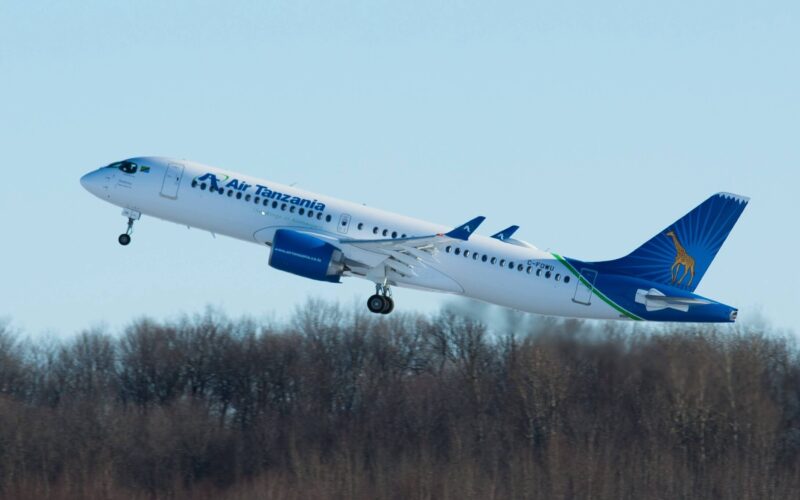A report detailing the performance of Air Tanzania Company (ATCL) during the fiscal year 2020/21, has revealed that the airline increased its revenue and almost halved its losses for that period.
The performance of the flag carrier’s regional fleet contributed to the airline’s increase in revenue. ATCL’s four Bombardier Q400s and two Airbus A220s broke-even after recording a marginal profit of TZS 12.26 billion ($5.27 million) and TZS 12.09 billion ($5.20 million) respectively for the year ending June 30, 2021.
According to Tanzania’s Controller and Auditor General, Charles E Kichere, ATCL reduced its total losses by 40% in FY 2020/21 compared to FY 2019/20. The airline cut its operating losses from TZS 60.25 billion ($25.9 million) in 2019/20 to TZS 36.18 billion ($15.5 million) in 2020/21.
Kichere ascribed the reduction to ATCL’s management trimming the airline’s direct costs by 3%.
Additionally, the flag carrier increased its total revenue by TZS 16.99 billion ($7.31 million) to record TZS 174.59 billion ($75.1 million) during the year 2020/21, up from TZS 157.60 billion ($6.78 million) in 2019/20. This is an 11% increase from the previous year, says Kichere.
Despite being hampered by low demand as a result of the COVID-19 pandemic, the report attributes ATCL’s financial results to the performance of its fleet.
“The consecutive losses were due to inability of the individual aircraft to attain break-even point,” said Kichere.
From June 30, 2021, ATCL operated a fleet of nine aircraft: two Boeing 787s, four Bombardier Q400s, two Airbus A220s and One Dash-8 Q300.
However, Air Tanzania’s single Dash-8 Q300 was not operational in 2020/21, having been grounded for more than three years over unresolved repair issues.
A delay in starting operations on international routes contributed to the underperformance of airline’s long-haul fleet. ATCL’s 787s recorded higher operational costs than revenue generated, resulting in a loss of TZS 23.61 billion ($10.1 million).
Kichere said: “The underperformance of the Boeing aircraft was attributed to the reasons of low load factors, few destinations (routes) in comparison with planned cycles.”

